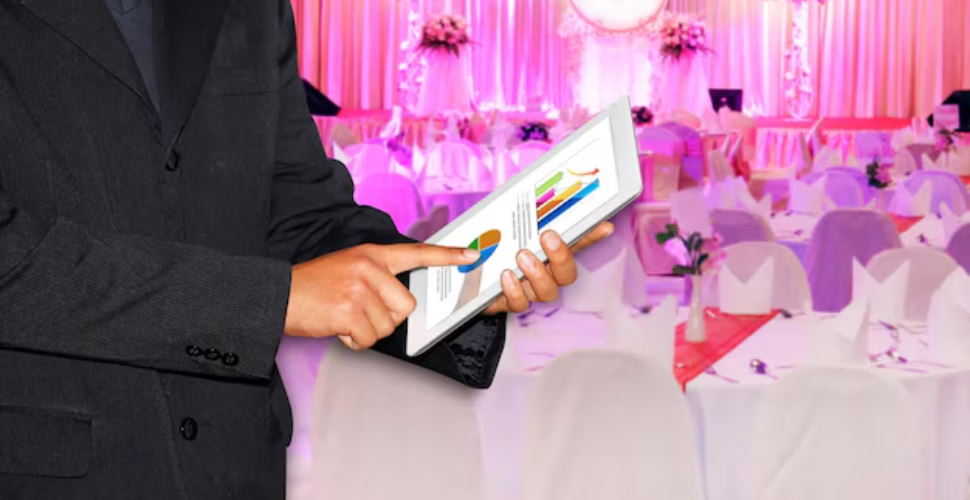Event success is something every organizer strives for when planning events, yet many don’t understand exactly what that entails. How can an organizer know whether their event was a hit or just another gathering of lonely souls with empty coffee cups? In this guide, we delve deep into measuring event success, discussing all its ins and outs as well as sharing metrics for tracking purposes to truly comprehend what drives event success.
The Importance of Measuring Event Success
Perhaps you are asking, Why does measuring event success matter so much? The reason is straightforward—without data, you are simply guessing. Regardless if it’s a conference, product launch, or intimate workshop, event measurement turns opinions into facts that help shape decision-making moving forward.
Consider it similar to making a cake. You might assume that the cake tastes excellent, but if you do a taste test and check if the layers are moist, you have facts to support your claim. In much the same manner, tracking event metrics helps you to gauge your event’s true impact.
Set Clear Goals
Before tracking numbers and setting goals for an event, it’s essential that you clearly establish what success means to you. Goals may differ greatly between events, but here are a few common ones for consideration:
- Attendee Satisfaction: Are guests leaving smiling? Use surveys and feedback forms to measure their levels of happiness.
- Engagement Levels: Did attendees participate actively during Q&A sessions or social media interactions?
- Revenue Generation: Did ticket sales, sponsorships or product purchases reach your targets?
- Brand Exposure: Did your event increase awareness of your brand? Monitor news coverage and mentions on social media.
Setting specific objectives helps you develop a plan for gauging the success of your event that is consistent with your overarching vision.
Key Event Metrics to Consider
In order for events to reach success, data needs to be collected. Here are the essential event metrics you should monitor:
1. Attendance and Registration Rates
- The total registrations versus actual attendance gives an idea of who actually showed up, relative to who signed up; it serves as a clear measure of interest versus commitment for your event.
- No-Show Rates: High no-show rates might indicate issues with your communication or the event’s perceived value.
2. Engagement Levels
- Session Attendance: Keep track of which sessions were most attended to gain insight into which topics resonate with your target audience.
- Audience Interaction: Measure live Q&A participation, social media engagement and event app usage to gauge audience interaction levels—more interaction indicates greater audience involvement!
- Networking Activity: At events focused on forging connections, track how many networking interactions or meetings take place during an event.
3. Revenue Metrics
- Upsells and Ticket Sales: Track the amount of money you made from ticket sales and any other products you sold.
- Sponsorship Revenue: Evaluate whether your financial objectives were fulfilled by the sponsorship agreements.
- Return on Investment, or ROI: Determine the total profit in relation to the event’s expenses.
4. Marketing Impact
- Social Media Reach: Track how many people engaged with your posts, shared or mentioned your event across various social networks.
- Website Traffic: Use analytics to monitor how many visitors came and stayed for how long on your event page.
- Email Open and Click Rates: These metrics give insight into how effective pre-event communication has been.
5. Feedback and Satisfaction
- Post-Event Surveys: Conduct surveys post-event, asking attendees about their overall experience, what they enjoyed most about it, as well as areas for potential improvement.
- Net Promoter Score (NPS): Ask attendees, “Would you recommend this event to a friend?” to gain valuable insight.
- Customer Testimonials: Although qualitative feedback can be harder to measure accurately, its addition can add an intimate perspective to event measurements.
Tools for Event Measurements
There are many tools available to assist you in monitoring these indicators. Here are a few well-known ones:
- Event Management Software: You can handle registrations and collect statistics with platforms like Cvent, Eventbrite, or Bizzabo.
- Survey Tools: Attendee input can be gathered using tools like Google Forms or SurveyMonkey.
- Social Media Analytics: You may monitor interaction across several channels with tools like Hootsuite or Sprout Social.
- CRM Systems: To keep track of communications with your guests prior to, during, and following the event, use platforms such as Salesforce.
By automating data collection and providing real-time insights, these solutions simplify the process of monitoring event success. It is like having a personal assistant who never sleeps—only much less chatty.
How to Analyze Your Data
To analyze data effectively, follow these steps:
Compare the metrics to your pre-event goals to determine if you met or exceeded your expectations.
- Identify trends: Look for patterns in the data, such as higher attendance in sessions on specific topics. This helps you understand audience preferences.
- Use visual aids: Charts, graphs, and dashboards can make complex data easier to understand. Visualizing data helps identify areas of success and areas for improvement.
- Seek feedback: Personal feedback, such as survey responses and testimonials, can provide a deeper understanding of the attendee experience. A well-timed comment can reveal issues that raw numbers might miss. By following these steps, you can gain valuable insights and improve your event management strategies.
Best Practices for Future Event Measurement
Follow these steps to make each event an outstanding one:
- Plan Ahead: Set goals and determine which event metrics to track before your event kicks off.
- Communicate Clearly: To avoid data disaster, ensure your team knows which data points are crucial; communication may save the day!
- Invest in Technology: For efficient data collection, employ robust event and survey tools.
- Review Regularly: After each event has concluded, arrange post-event meetings to review data collected as well as discuss improvements that should be implemented for next time around.
- Keep It Straightforward: Don’t overcomplicate your data analysis; focus on those KPIs which directly relate to achieving your goals.
Keep in mind that consistency is essential to event measurement. Every event offers an opportunity to grow, gain knowledge, and get closer to actual event success.
Final Thoughts
As previously discussed, measuring event success involves understanding what works and doesn’t work at each event. By setting clear goals, tracking relevant event metrics, and learning from each event, you can enhance your approach and attain higher levels of event success each time around. Data will tell you where there’s room for advancement or improvements.
As in any competitive industry, knowing what drives success in event planning is the key to staying on top. By adding humor and passion into the planning process, your events may go above and beyond expectations! Happy planning! Here’s to many more successful events!
Before we conclude this discussion, let’s highlight one venue that knows the art of event success: Vue17 in St. Louis is worth your consideration, as we offer sleek, contemporary spaces perfect for hosting corporate meetings as well as intimate social gatherings with cutting-edge technology and a stylish atmosphere.




